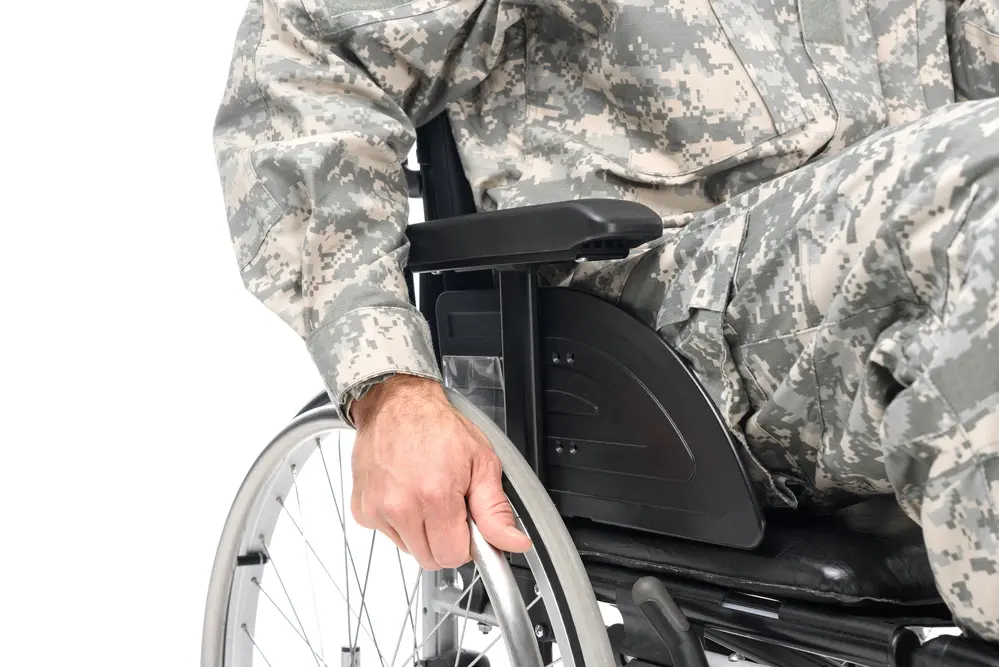Leaving the country on disability can be complicated, especially when maintaining disability benefits from Social Security Disability Insurance (SSDI) or Supplemental Security Income (SSI).
Different regulations may apply depending on where you are going and how long your stay is.
Understanding these rules is critical to ensure that your disability payments remain uninterrupted abroad.
In this article, we’ll explore the conditions for leaving the country and what countries are allowed for SSDI recipients.

Conditions for leaving the US and keeping SSDI
To leave the United States and still keep disability benefits from SSDI or SSI, you must meet certain requirements.
- How long can you be out of the country with a disability? You must not be out of the United States for more than 30 days. If you are outside of the US for 31 days or more, disability payments will stop, and you will have to reapply when you return.
- If your disability is due to a physical or mental condition, the Social Security Administration must determine that your disability still exists while you are abroad.
- Can SSDI recipients live in another country? Suppose your benefits are from SSI rather than SSDI. In that case, the country you plan to visit must be one of the following: Canada, Mexico, Puerto Rico, Guam, and certain countries in the Caribbean. Disability payments are unavailable for travel to Iran, Cuba, or North Korea.
- It is important to note that there are exceptions to these rules if you fall under a special category of benefits or qualify for an exemption. These categories include disability benefits related to disability pensions, veterans’ disability benefits, and disability-related public assistance programs. You should contact the Social Security Administration for more information about these exemptions.
In conclusion, if you plan on leaving the country on disability, you must understand the rules for maintaining your disability payments while abroad.
Common FAQs
Can I leave the country on short-term disability?
It is possible to leave the country on short-term disability if certain conditions are met. First, you must not be out of the United States for more than 30 days. If you stay longer than this, disability payments will stop, and you will have to reapply when you return. Additionally, if your disability is due to a physical or mental condition, the Social Security Administration must determine that your disability still exists while you are abroad.
Do I lose my VA disability if I move overseas?
When leaving the country on disability, veterans who receive benefits from the Department of Veterans Affairs (VA) face a unique set of rules.
The VA does not have an absolute prohibition against recipients traveling abroad, but special regulations must be followed. Depending on your situation and type of disability benefits, you may be eligible to maintain your payments while abroad.
It is essential to contact the VA for more information about their regulations on leaving the country with a disability and maintaining VA benefits.
What is the social security 5-year rule?
The Social Security 5-Year Rule is a set of regulations that govern the receipt of social security benefits.
The rule states that to qualify for and receive Social Security Disability Insurance (SSDI) payments, the applicant must have worked and paid taxes into the Social Security system at least five of the last ten years before becoming disabled.
Which countries have the best disability benefits?
The answer to which countries have the best benefits depends on various factors, such as the type of disability and the benefits available in each country.
Northern European countries are known for their generous disability policies and social security systems. In Finland, disabled people receive a basic income if they can’t find work due to their disability. In Denmark, the social security system offers a range of benefits to disabled people, including health care and a disability income allowance. Sweden also has several programs for disabled people, such as special housing allowances and supplemental pensions for those unable to work due to their disabilities.
Additionally, countries like Canada, Australia, and New Zealand offer comprehensive and generous disability benefits to those in need. Each country provides support for disabled people, such as financial assistance, transportation allowances, and access to assistive technology.
Do I have to notify social security when I travel internationally?
Yes, suppose you are receiving supplemental security income (SSI) or supplemental security disability insurance (SSDI) benefits. In that case, you must notify the Social Security Administration (SSA) whenever you plan to travel outside the United States. This includes both short and long-term trips.
When you plan a trip abroad, you must contact the Social Security Administration and provide details about the trip. This includes information such as how long you will be gone, where you are going, and when you plan to return. Additionally, if you receive SSI payments, you must notify the SSA of any extended absence that lasts more than 30 consecutive days.
What state pays the highest disability benefits?
The answer to what state pays the highest disability benefits depends on various factors, such as the type of disability and the amount of supplemental income received. For example, California, New York, Massachusetts, and Maryland have higher median SSI/SSDI payments than other states due to their cost of living and higher poverty levels.
Some states provide additional benefits for those with disabilities. For example, Connecticut offers programs that provide employment assistance and assistive services such as medical equipment and home modifications. Also, Oregon provides benefits such as free bus passes and reduced costs for essential household items.
Ultimately, the best state for benefits will depend on the individual’s unique situation and needs. It is important to review all available options before making a decision.
How much does social security disability pay in 2022?
In 2022, the Social Security Administration (SSA) will pay disability benefits to eligible individuals of all ages, including adults and children. The amount of benefits paid will depend on the individual’s financial needs, work history, and other factors. Generally speaking, the monthly benefit for an adult with a disability is around $1,180. For children with disabilities, the monthly benefit amount can range from $551 to $1,085.
In addition to receiving disability benefits, Social Security also provides additional benefits such as Medicare and Supplemental Security Income (SSI).
At what age does SSDI change to social security disability?
At age 65, the Social Security Disability Insurance (SSDI) program automatically converts to Social Security retirement income. This conversion is known as a “disability-to-retirement conversion” and occurs regardless of whether the individual has been medically declared disabled.
For individuals who were found disabled before age 65, SSDI payments will continue until age 65, when they receive Social Security retirement income. The benefit amount may change as the SSDI and Social Security retirement benefits are calculated differently.
If you have reached full retirement age (currently 66 for those born between 1943-1960), you may receive both SSDI and Social Security retirement income simultaneously. However, the combined amount will still be subject to a maximum benefit limit.
It is important to note that individuals receiving SSDI payments should contact their local SSA office before age 65 if they wish to convert their benefits to Social Security retirement income.
Before you go
Traveling while on benefits can be confusing. Hopefully, this article has answered your questions.
If you still need clarification, it would be best to contact a local office near you for an accurate answer.
We go over a few options. If you’re a disabled woman, check out our article on grants for disabled women. We’ve also written extensively about qualifying for disability.
Until next time, catch you all on the next post.

